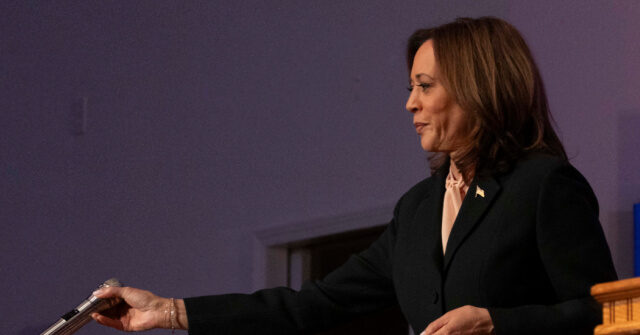On Election Night, Vice President Kamala Harris held a watch party that soon became a center of attention due to a notable decision by her campaign team. As reported by Nicholas Nehamas from the New York Times, the atmosphere at the event took a significant turn when the campaign chose to mute the sound from the TVs broadcasting election updates, opting instead for music. This decision was made shortly after a CNN guest commented that the night had a distinctly familiar feel to it, reminiscent of the electoral defeat in 2016. As a result, the mood at the watch party became noticeably somber, leading to a dwindling crowd amidst concerns about the electoral landscape.
The context of the night underscored the broader challenges facing Harris as she and her party navigated a complex electoral environment. While voting was still ongoing and many critical battleground states remained too close to call, early reports indicated that Harris was encountering a more difficult path to securing an electoral college victory than her campaign had hoped. Notably, former President Donald Trump was demonstrating strong performances in key swing states, particularly in Georgia, which had been anticipated to be competitive. This shift signaled a possible repeat of previous election dynamics that the Democratic party had aimed to overcome since the 2016 elections.
As the results continued to trickle in and certainty about the race remained elusive, tensions mounted at the watch party. The events unfolded against a backdrop of heightened expectations within Harris’s camp, who had been preparing for a potentially triumphant night. Instead, the decision to drown out the TV chatter reflected a sense of unease permeating the atmosphere, with attendees visibly grappling with the prospect of a nail-biting election that could lead to an unsettling outcome. The contrast between the celebratory tone envisioned by the Harris campaign and the actual unfolding of events epitomized the precarious nature of contemporary electoral politics.
Reports indicated that several states critical to Harris’s electoral prospects—such as Pennsylvania, Michigan, and Wisconsin—had not yet been called. These states were pivotal in the national electoral calculus and would play a significant role in determining the outcome of the election. The uncertainty surrounding these key regions heightened the tension at the watch party, as guests expressed concerns about the trend in voting patterns that seemed increasingly favorable to Trump’s campaign. The implications of these early results were profound, leaving attendees anxiously awaiting further updates.
The muting of the election coverage also served as a metaphor for the larger narrative surrounding the Democratic party and its approach to electoral challenges. The stark reminders of 2016 could not be easily dismissed, creating a psychological barrier for party supporters hoping to avoid the setbacks of the past. This was compounded by the intense media scrutiny that enveloped both Harris and the Democratic ticket, which often drew comparisons to the previous election cycle. By replacing the election commentary with music, the campaign aimed to foster a more optimistic environment, even as the ground realities painted a more anxious picture.
Overall, the Election Night watch party for Vice President Kamala Harris encapsulated the uncertainty and tension that characterized the electoral landscape of the moment. With crucial electoral outcomes hanging in the balance and key states yet undecided, the atmosphere shifted from one of anticipation to one fraught with concern. The decision to mute the TVs indicated an attempt to control the narrative and maintain morale in the face of mounting anxiety. As the election unfolded with unfamiliar echoes of 2016, it became clear that Harris and her campaign would need to confront both the immediate challenges of the current electoral cycle and the lingering shadows of past electoral experiences.

